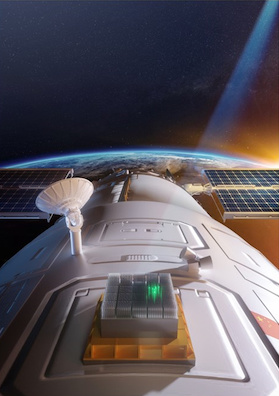POLAR

The POLAR instrument was a gamma-ray burst
polarimeter on China’s Tiangong 2 space lab. While the highlight of
Tiangong 2 was the manned flight mission to the space station, a number of
instruments worked over a three year span working autonomously, including
POLAR. The space station was deliberately de-orbited in a controlled
re-entry in July 2019. The instrument had recoreded some 55 bursts and
obtained high-precision polarization measurements for five of these burst
events.
POLAR should not be confused with GGS Polar, a near-Earth space environment
study satellite which operated between 1996 and 2008.
POLAR consisted of a 40 x 40 array of plastic scintillator bars, with a
total effective area of 400 cm2. These are protected by passive
shielding outside the wide field of view of the instrument which covered
roughly one third of the sky. It used the Compton scattering effect to
measure polarization of incoming photons.
POLAR observed 55 gamma-ray bursts during the mission, including five bursts
for which detailed polarization measurements were available
[University of Geneva POLAR mission]
[Publications]
[All Missions]
[by Time]
[by Energy]
Page authors: Lorella Angelini Jesse Allen
HEASARC Home |
Observatories |
Archive |
Calibration |
Software |
Tools |
Students/Teachers/Public
Last modified: Thursday, 24-Sep-2020 17:21:49 EDT
|